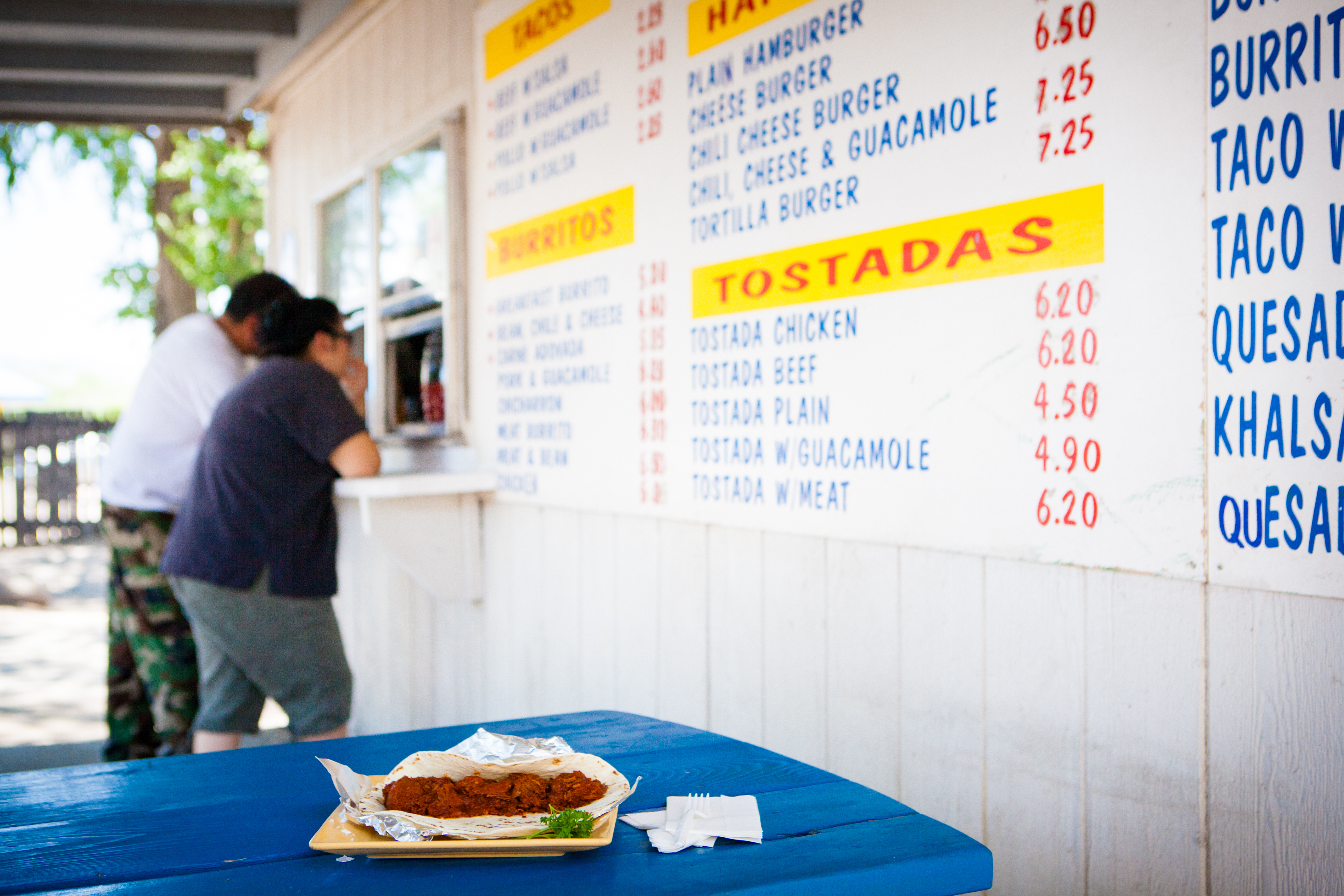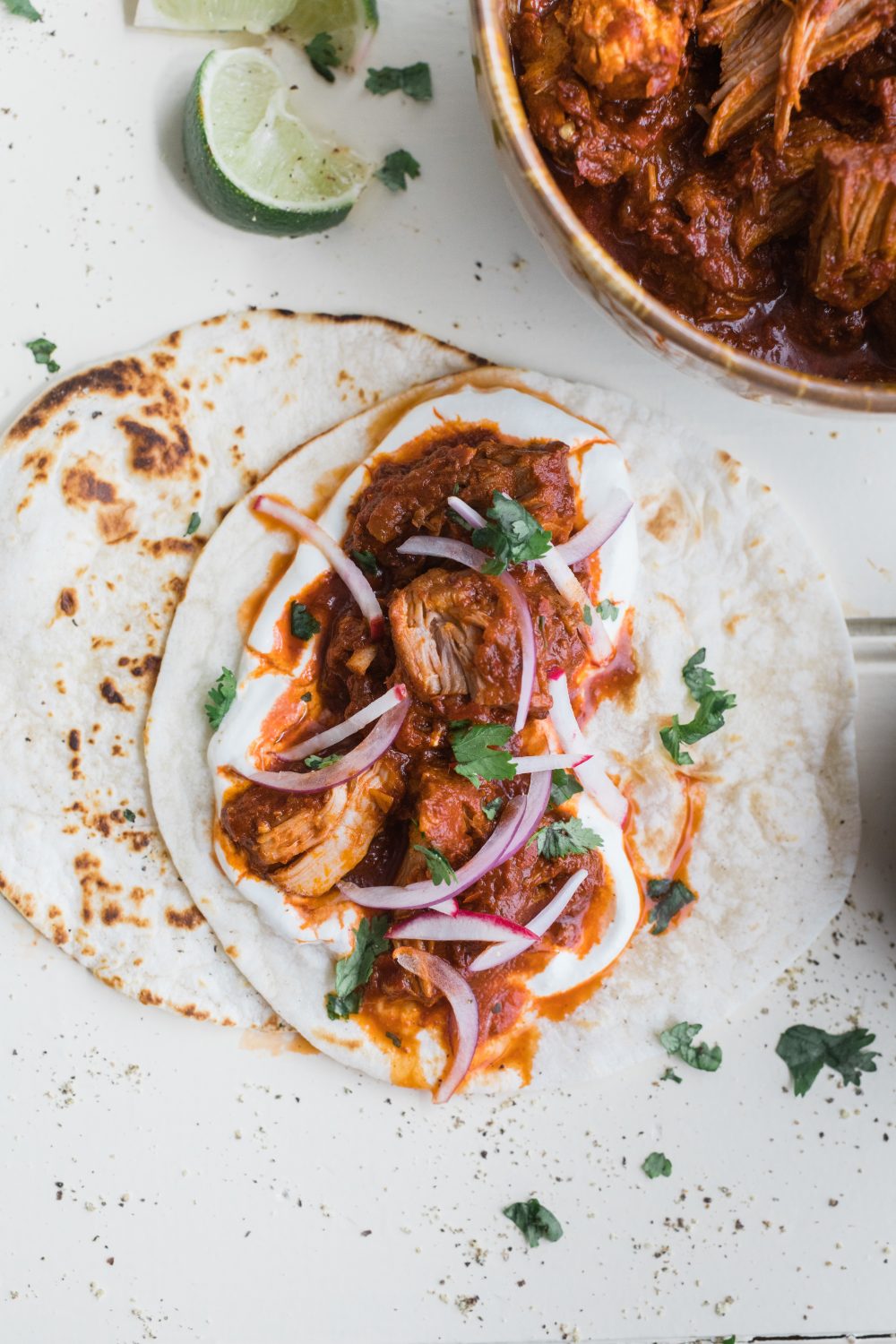The sketchy place by the strip club.
Admittedly, not your typical menu marketing campaign. But when you’re in New Mexico searching for the best carne adovada, it can count as the highest praise.
Because here, adovada—an earthy dish of fork-tender hunks of braised pork stewed in a thick red sauce of pureed chilies, garlic, cumin and oregano—is rough-edged, brash everyday food. It’s everywhere.
And it’s unbelievably delicious.
Which is how I found myself at Mellow Velo Bicycles in Santa Fe, asking grime-covered mechanics for their tips on the best adovada around.
The sketchy place by the strip club, of course. And the food trucks by the airport. And—my favorite tip—Pancho the delivery guy. I’m still not sure what that means.
Over the course of four days, I would try them all (except for Pancho’s, sadly), more than a dozen variations across a 60-mile radius encompassing Sante Fe and Albuquerque.
I ate it paired with posole, beans and Spanish rice at Mary and Tito’s Café in Albuquerque; stuffed into a fluffy fried sopapilla at Atrisco Café & Bar in a Sante Fe strip mall; folded into a flour tortilla with loads of cheddar at Rancho de Chimayo; stacked into enchiladas at the locals-only La Choza in Santa Fe’s Railyard Park; and under eggs, eaten elbow-to-elbow with ranchers at the front counter of The Pantry, also in Sante Fe.

But it wasn’t until I walked away from the crowded carry-out window at El Parasol in the town of Española, a plump adovada-stuffed burrito in hand, that I discovered my favorite.
El Parasol’s fare borders on fast food. It’s part of a small local chain started in 1958 by two young brothers—10 and 12 in the day. They sold their mother’s beef tacos (15 cents) and red pork tamales (10 cents) under an umbrella, hence the name.
Their fiercely spicy, acid-sharp adovada—scarfed down in my blazing-hot car, idling in the stand’s dusty parking lot—won me over. The pork was uncommonly juicy, while the spices and vinegar brightened the chili flavor better than any other version I’d tried.

The dish exists in one form or another across Latin cuisines. Spanish for “marinated,” adovada was born from necessity and subsistence. Pigs were butchered in the fall, and the meat was preserved in chili paste flavored with wild-grown garlic and oregano.
It was a natural choice. Originally from Central and South America, chilies are everywhere in the Southwest, sold in varietals little known outside the region: Big Jim, Rio Grande, Sandia, Española, Joe E. Parker. Bags of coarsely crushed dried chilies, ready to be made into adovada, turn up at farmers markets, roadside stands, even convenience stores.
Once-green chilies, sun-dried to a glossy red, woven into long ristras, hang from the rafters of Rancho de Chimayo. At El Potrero Trading Post in Chimayo, they share shelf space with religious icons.
Which helps explain why in New Mexico’s carne adovada, the chilies overshadow the meat. Wonderfully so. The dish needs little beyond those chilies. In that way, its closest relative might be the all-beef chili of Texas. (In fact, we found sweet, earthy pork paired even better with the fruity chilies. Just don’t say that in Texas.)
At Milk Street, we couldn’t cherry-pick from the amazing array of sun-dried chilies they have around Santa Fe. We needed to work with varieties that would be readily available around the country.
Mexico chilies—the widely available medium-hot chilies grown in the state—and 3 ounces of fruity, smoky Mexican guajillos gave us just the right flavor. If guajillos are hard to find, another 3 ounces of New Mexico chilies can be substituted.
Six ounces of dried chilies sounds like a tremendous amount. And it is. But don’t fear the heat. We call for seeding the chilies, which keeps the finished dish in check with just a mildly warm profile.
To round out the dish, we added sweet onions—a debatable addition in Santa Fe—that we softened in a spoonful of lard before adding the traditional oregano and cumin. A few teaspoons of ground coriander further boosted the chilies’ fruity flavor.
With so much flavor coming from the chilies, we discovered an extended marination of it for two hours covered, then another 90 minutes uncovered, to concentrate the sauce. Finishing the brick-red sauce with reserved chili puree and a tablespoon of molasses tied it all together.




